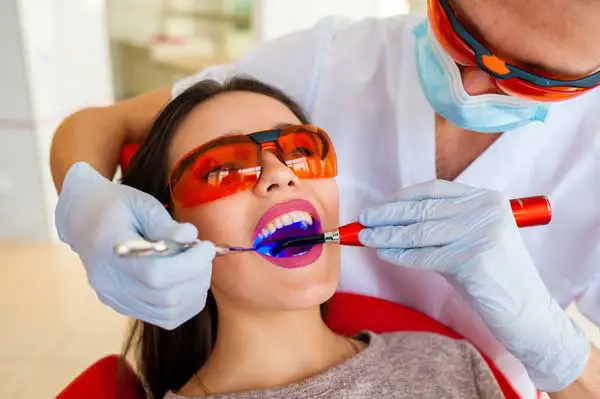Most Common Reasons Your Fillings May Hurt
Posted on 5/15/2025 by The Facial Center |
 Dental fillings are a vital part of restorative dentistry, helping to repair damaged teeth and prevent further decay. However, fillings can sometimes become painful, causing discomfort and affecting your daily life. Understanding the common reasons for filling pain can help you identify the issue and seek appropriate treatment. Dental fillings are a vital part of restorative dentistry, helping to repair damaged teeth and prevent further decay. However, fillings can sometimes become painful, causing discomfort and affecting your daily life. Understanding the common reasons for filling pain can help you identify the issue and seek appropriate treatment.
Several factors can contribute to pain in your fillings. Let's explore some of the most common reasons:
1. Sensitivity after placement: It’s normal to experience some sensitivity after getting a new filling. This is because the drilling process can irritate the nerve within the tooth. This sensitivity usually subsides within a few days or weeks. Over-the-counter pain relievers can help manage discomfort during this time.
2. High filling: Sometimes, the filling material can be placed slightly higher than the surrounding tooth surface. This can cause your bite to feel uneven and put extra pressure on the filling when you chew. This pressure can lead to pain and discomfort. If you suspect your filling is too high, visit your dentist for an adjustment.
3. Recurrent decay: Even with a filling, decay can develop around the edges of the restoration. This can cause pain, sensitivity, and even swelling. If you suspect recurrent decay, see your dentist as soon as possible to prevent further damage.
4. Cracked or fractured filling: Fillings can crack or fracture due to wear and tear, biting down on hard objects, or trauma. A cracked filling can cause pain when you chew or apply pressure. In some cases, the crack can extend into the tooth itself, requiring more extensive treatment.
5. Allergic reaction: In rare cases, individuals can develop an allergic reaction to the filling material, usually amalgam (silver fillings). This can cause pain, swelling, and redness around the filling. If you suspect an allergy, consult your dentist immediately.
6. Tooth infection: If decay reaches the pulp (the inner part of the tooth containing nerves and blood vessels), it can lead to an infection. This can cause severe pain, swelling, and even fever. If you experience these symptoms, seek immediate dental attention.
7. Grinding your teeth: People who grind their teeth (bruxism) are more likely to experience pain in their fillings. The constant pressure and friction can damage the filling and the surrounding tooth structure. If you grind your teeth, consider wearing a mouthguard to protect your fillings and teeth.
8. Loose or missing filling: Over time, fillings can loosen or even fall out. This can leave the sensitive inner layer of the tooth exposed, causing pain and sensitivity. If you notice a loose or missing filling, schedule an appointment with your dentist to have it replaced.
When to See a Dentist
If you experience pain or discomfort in your fillings, schedule an appointment with your dentist as soon as possible. Early intervention can prevent further complications and ensure timely treatment.
Maintaining Healthy Fillings
Taking proper care of your fillings and practicing good oral hygiene can help prevent pain and extend the lifespan of your restorations. Here are some tips:
| • |
Brush your teeth twice a day with fluoride toothpaste. |
| • |
Floss daily to remove plaque and food debris between your teeth. |
| • |
Avoid biting down on hard objects like ice or candy. |
| • |
See your dentist for regular checkups and cleanings. |
By understanding the common causes of filling pain and taking preventive measures, you can maintain healthy fillings and enjoy a comfortable smile.
|
|